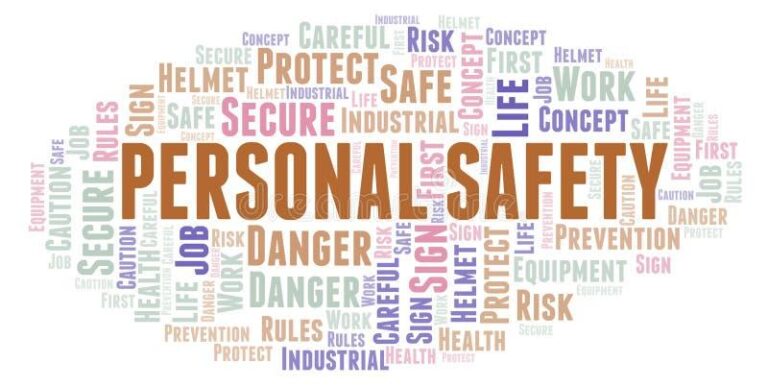Have you ever felt that uneasy sensation of being watched or followed while walking alone? Whether you’re heading home late at night or navigating unfamiliar streets, the possibility that someone might be trailing you can be genuinely frightening. Knowing how to stay safe in these situations isn’t just about reacting in the moment-it’s about being prepared, aware, and confident. In this article, we’ll walk you through practical steps and safety tips to help you protect yourself and stay calm if you ever suspect someone is following you. Your safety matters, and a few mindful habits can make all the difference.
Table of Contents
- Recognizing the Signs That Someone May Be Following You
- Practical Steps to Take Immediately for Your Safety
- Using Technology to Your Advantage When You Feel Threatened
- When and How to Seek Help From Authorities or Bystanders
- To Wrap It Up
Recognizing the Signs That Someone May Be Following You
One of the first indications that someone may be trailing you is repeatedly noticing the same individual or vehicle in your vicinity, especially if their presence seems unconnected to your routine activities. Pay close attention to whether this happens across different locations or during various times of the day. Other signs include feeling an inexplicable sense of unease, detecting that the person adjusts their path whenever you change direction, or noticing they maintain a suspicious distance without engaging in typical social interactions. Trust your instincts-if something feels off, it’s worth investigating further.
Additional behavioral cues to watch for include someone attempting to mimic your pace, a stranger consistently appearing where you frequent alone, or instances when your personal space feels invaded without clear reason. Keep an eye out for:
- Repeated eye contact or evasive glances
- Unfamiliar individuals loitering near your home or workplace
- Vehicles slowly driving behind you or parked nearby for extended periods
- Messages or calls from unknown numbers following encounters
Recognizing these signs early can empower you to take proactive safety measures and alert appropriate authorities if necessary.
Practical Steps to Take Immediately for Your Safety
At the first sign that someone might be trailing you, trust your instincts and take immediate action. Find the nearest well-lit, populated area such as a café, store, or any public place where you can seek help or at least make your presence known. Stay visible and avoid isolated spots. If you’re driving, keep your doors locked and avoid stopping until you reach a safe location like a police station or a busy gas station. Use your phone discreetly to call a trusted friend or the authorities, and inform them about your situation.
Keep your movements unpredictable to avoid being cornered. Change directions periodically and use crowded streets or public transport routes to your advantage. Remember these key points:
- Do not go straight home until you are absolutely sure you are not being followed.
- Keep your phone accessible to alert someone if needed, but don’t look distracted.
- Avoid headphones or distractions so you can stay alert and hear anything unusual.
- Observe and memorize distinguishing features of the person or vehicle following you, to report accurately later.
Using Technology to Your Advantage When You Feel Threatened
In moments when you sense danger, your smartphone becomes more than just a communication device-it turns into a vital safety tool. Leverage GPS tracking apps to share your real-time location with trusted friends or family, ensuring someone knows exactly where you are at all times. Many apps also offer emergency SOS features, alerting designated contacts or even local authorities at the press of a button. Additionally, turning on your phone’s flashlight and recording audio or video discreetly can serve as crucial evidence if the situation escalates.
Don’t underestimate the power of technology designed explicitly for personal safety. Devices like wearable panic buttons or smart jewelry sync to your phone and can silently trigger alerts without drawing attention. Moreover, installing safety apps that constantly monitor nearby activity or even detect unusual movements through sensors can provide an extra layer of security. Always keep your devices charged and easily accessible-technology can be your strongest ally when you need it most.
When and How to Seek Help From Authorities or Bystanders
Knowing when to involve others can make all the difference in a potentially dangerous situation. If you detect persistent or aggressive behavior from someone trailing you, don’t hesitate to reach out immediately. Seek out busy, well-lit areas where people congregate, such as stores, cafes, or public transportation hubs. If you feel unsafe, approach a business employee or security personnel and calmly explain your concern. They can offer shelter, call authorities, or serve as witnesses, helping you stay protected until help arrives.
Contacting emergency services should be considered when you feel threatened or if the follower’s actions escalate-invasive staring, quickening their pace as you do, or following you into private spaces. When calling 911 or your local emergency number, speak clearly and provide your location, descriptions, and any other relevant details. If you’re unable to talk, some smartphones allow silent or text-based emergency notifications. Remember, alerting bystanders by making eye contact or verbally expressing discomfort can also deter the follower and draw attention from passersby willing to assist.
- Stay visible and in crowded areas.
- Speak up to draw attention.
- Keep your phone ready to call for help.
- Trust your instincts-don’t wait if something feels wrong.
To Wrap It Up
Staying alert and knowing how to respond if you believe someone is following you can make all the difference in protecting your safety. Trust your instincts, stay in well-lit and populated areas, and don’t hesitate to seek help or contact authorities if you feel threatened. By being prepared and aware, you empower yourself to take control of the situation and reduce potential risks. Remember, your safety always comes first-stay vigilant and stay safe.



